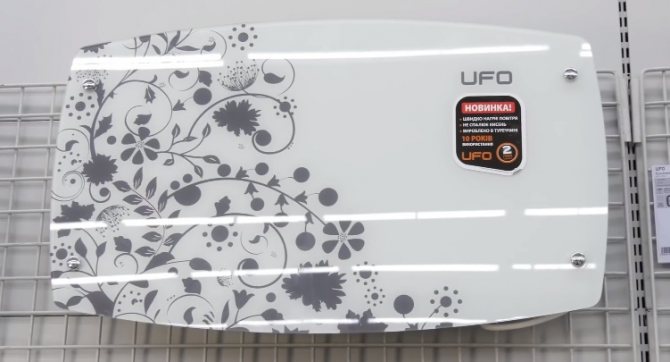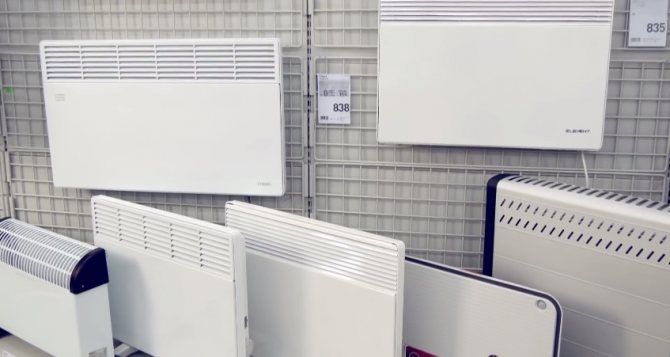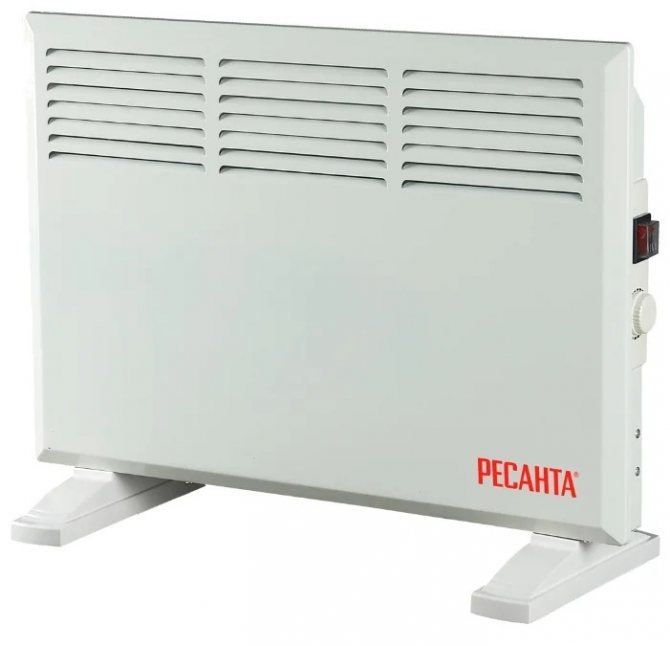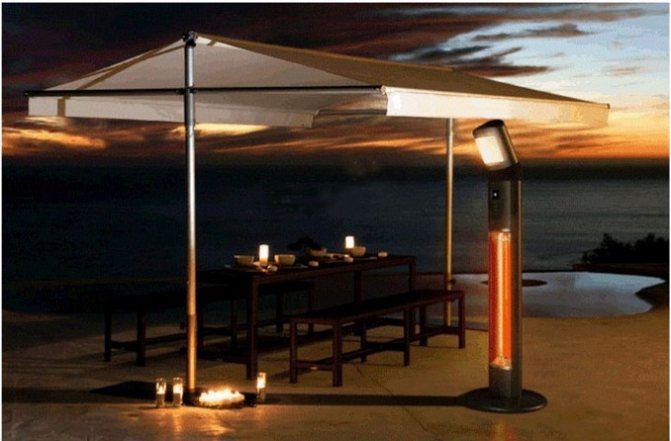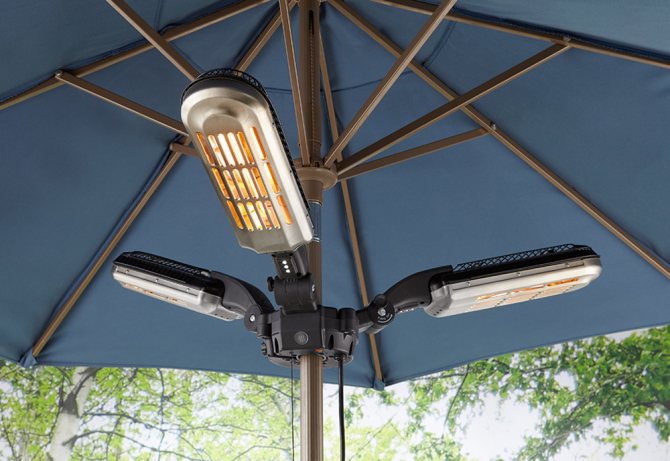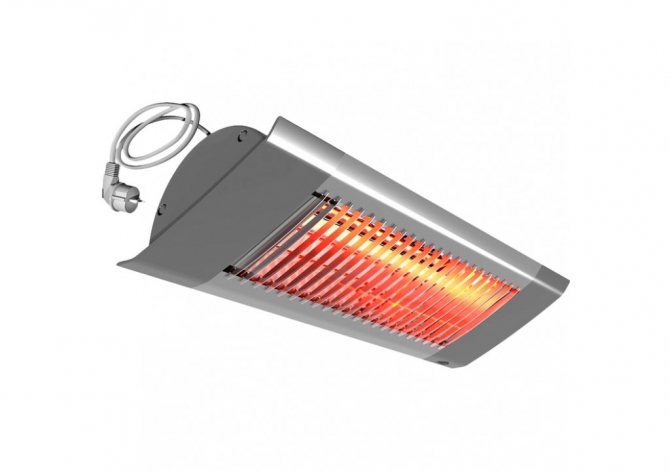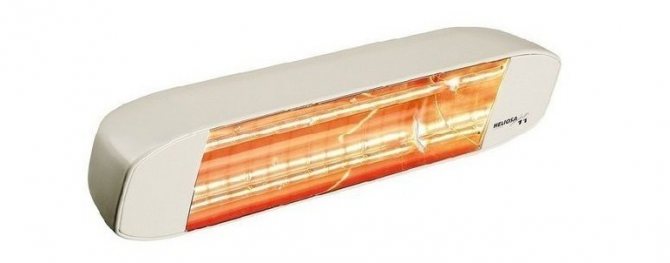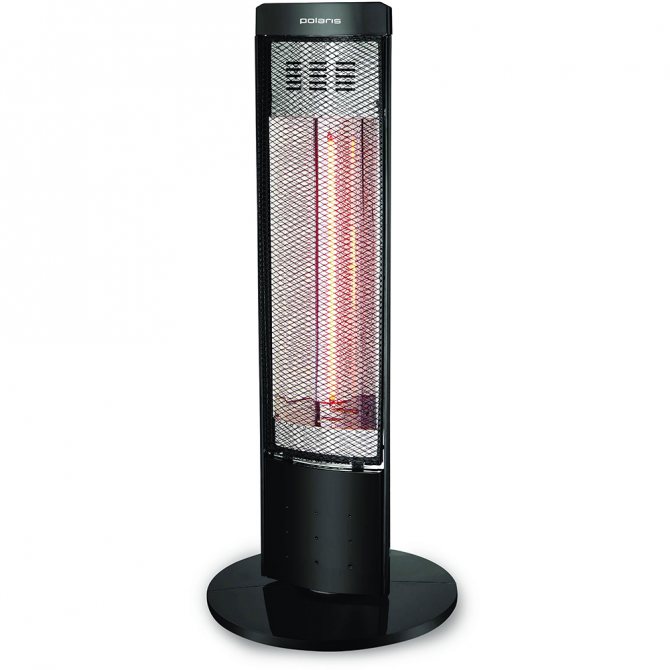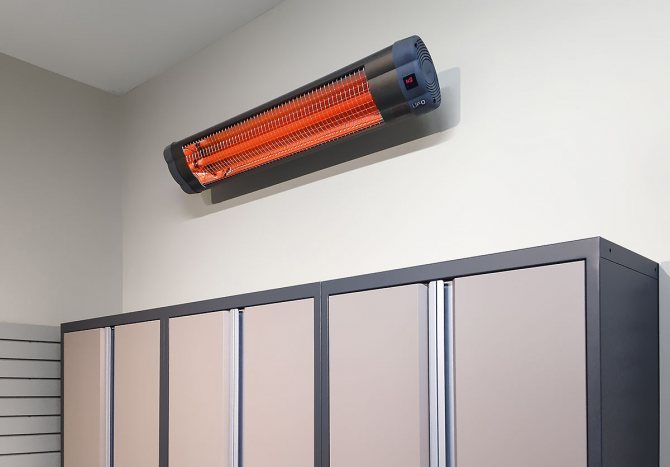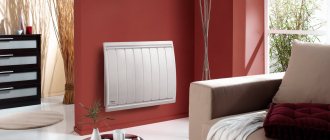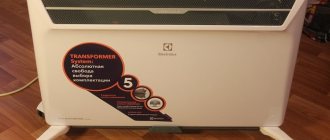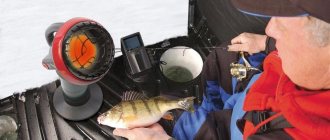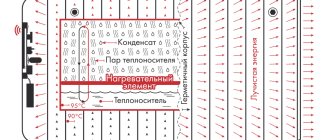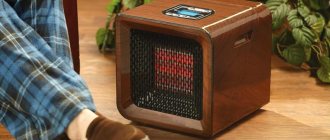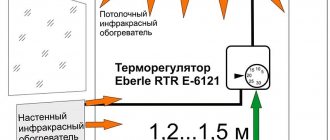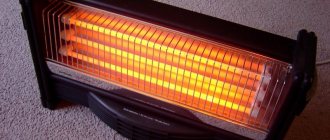With the arrival of cold weather, it often turns out that the centralized heating cannot cope with heating the apartment, the temperature in the premises is too low, the residents suffer from the cold, and I risk catching a cold. Not surprisingly, many go to the market or shop to purchase a coil heater. This device has been widely known since Soviet times, it has proven itself to be quite effective and convenient in operation. But is it relevant in the modern world, among many competitors?
Electric heater myths
Electric heaters dry the air
The instructions for the heater often indicate the fact that the heater does not dry the air. It's true. There are no heaters as such, these are the same central heating batteries. They allegedly dried the air for the reason that during operation they did not absorb water from the air, but generated heat. The air still becomes drier, but there is an explanation for this.
Why is the air getting drier?
The condition of the skin and respiratory system is affected by air humidity. This is known to many. When the humidity drops below 40%, the skin dries up, at 60%, on the contrary, absorbs excess moisture, if the humidity is even higher, it becomes difficult for a person to breathe. Temperature also affects humidity. Let's do an experiment.
Pour boiling water into one glass and cold water into the other. A glass containing boiling water will give off steam. A simple experiment shows that as the temperature rises, increased vapor production is generated. If you cool the warm air with cold air, the "excess" water will settle in the form of drops. Rain, dew, fog are the same phenomenon. When humid hot air reaches the cold layer of the atmosphere, cooling occurs, excess water from the air falls to the ground in the form of rain.
To understand how much humidity should be in 1m3 of air, at different temperatures, I made a table. This moisture is called "Absolute moisture".
| Table of the maximum water content depending on its temperature | ||||||||||||||
| Air temperature t,? С | ?30 | ?20 | ?10 | 0 | 10 | 20 | 30 | 40 | 50 | 60 | 70 | 80 | 90 | 100 |
| Amount of water, g / m3 | 0,29 | 0,81 | 2,1 | 4,8 | 9,4 | 17,3 | 30,4 | 51,1 | 83,0 | 130 | 198 | 293 | 423 | 598 |
Usually, the air is not completely saturated with water vapor. This is partially happening. The data in the table is a pivot point that will help determine the real humidity, it is also "Relative". It is about it that is reported in the weather forecast, its value is shown by special devices - psychrometers.
So what is Relative Humidity? This is the volume of water that is in the air at a certain temperature, compared to the maximum amount of water possible. The value is expressed as a percentage.
Let's say the air temperature is 10 ° C, the humidity is 50%. In this case, the amount of vapor in 1 m3 is 9.4 / 100 * 50 = 4.7 g. You turn on the heater, the temperature rises to 20 ° C. The amount of water in the air remained unchanged. As a result, the air humidity will be 27%. This air is dry and not comfortable for humans. Now, I think you understand why they say that the heater dries the air.
Detailed specifications and spiral geometry
Alloy
Now it is necessary to select an alloy for a wire of high ohmic resistance. Each alloy has its own properties that should be considered for the intended operating conditions. Some alloys withstand high temperatures better, others resist oxidation at high temperatures better, and some are non-magnetic.
Dimensions (edit)
Coil designers must fit the coil into the heater body.To do this, it is necessary to calculate the length of each spiral, that is, the extension length (SL). As a rule, the spiral emerging from the coiling machine is completely closed: all the turns of the wire spiral fit tightly to each other. When the spiral is stretched, it opens so that the turns do not touch. The amount of this opening is called the stretch ratio (SR = stretch length / closed length). The stretch ratio is the geometric step from one turn of the wire to the next, expressed in units of the wire diameter. A closed spiral (not stretched) has a stretch ratio of 1.00. Stretch ratio 2.00 is the distance between turns (SBT) equal to one wire diameter. A properly sized coil will have a stretch between the minimum and maximum required for a given type of heater, typically 2.5 to 4.0. This allows air to circulate around the wire for better heat transfer.
The inner diameter of the annular sleeves for fastening the spiral (for example, in a duct heater) sets the outer diameter of the spiral. The outer diameter depends on the suitable spindle for winding the spiral.
Wire gauge
Wire gauge selection is even more challenging, such as thinner wire, higher resistance, measured in ohms per foot. The use of fine wire increases the power density (W / in2) for the specified outside diameter. The stem to wire ratio (A / W) will be higher for thinner wires. If the A / W ratio is too high, the coil will be too thin and will begin to sag. If it is too small, the coil will be very strong to stretch and it will be difficult to wind it in the heater body.
Infrared spiral heater burns oxygen
This statement is not true. If the spiral burned oxygen, it would itself have burned out from oxidation. In a couple of hours, only ash would be left from the spiral. People feel unwell for a different reason. The fact is that the heated air tends upward, thereby allowing the cold air to settle on the heating element.
Together with the air, dust particles from clothes and objects settle on it. These particles are burned and the food rushes upward with the warm air. That is why a person feels unwell. It is contraindicated to use such heaters in rooms where there are people with weak lungs. I do not recommend using them in rooms with a small area.
Mounting method
The installation of the unit depends on its design features:
- Floor. The simplest design that has legs or wheels for movement. Such a device is easy to transport and can be placed anywhere. However, they occupy a certain usable area, and there is a possibility of knocking over when passing by. Also, some radiator-type units do not have a rotary adjustable design, therefore they can only heat objects at the level of the radiator itself.
- Wall. Convenient for installation in tight spaces. However, for installation, you will have to drill the walls and mount the fixtures (brackets). Some wall models can be rotatable and can be deployed to warm different parts of the room.

- Ceiling. For infrared heaters, this is the best option, as it allows you to cover a larger area. However, installation is quite difficult and will require certain skills, tools and outside help. If it is necessary to heat large rooms (over 20 m 2), then we recommend using ceiling systems. Therefore, in this situation, if the question arises: an infrared or oil heater, which is better, then the answer is unambiguous - an infrared ceiling type.
Infrared electric heaters
This type of heater was very popular. Their construction is quite simple. There is a nichrome spiral wound on a ceramic base or placed in a transparent tube made of quartz glass. A reflector of infrared rays is installed behind the spiral. To protect a person, there is a grill on the heater case.
The peculiarity of such a heater is that it heats not only the air, but also the objects located near it. It is advisable to use it in rooms with a large area where rapid heating is required. Since, using oil or converter heaters, it will take a sufficient amount of time to warm up. This will increase the cost of electricity. Such a heater is bad in that when the coil is heated, poisonous substances are released. However, if the room is large and there is a draft, this heater will work like no other.
Design features: external modules
Outside are the following elements:
- Directly the body. You should not be guided exclusively by external data, although you should not forget about this. The design of the model is easy to evaluate from the photo. The heater should complement the existing interior of the room, look organic and natural in it. From a design point of view, the most important requirement is the presence of a protective grill on the body, which excludes direct access to the spiral. The mesh size should be about 5 millimeters. Plastics and metals are the materials for the manufacture of cases. Plastic must be non-flammable, but it is quite difficult to check this, some manufacturers deceive the buyer, use standard plastic, which deforms very quickly under the influence of high temperature. Thus, it is better to opt for a metal analogue, it does not need any additional checks.
- Toggle switches and switches. If we talk about budget models, then they have mechanical type switches. Check how smoothly the knobs rotate, how easily the switches move, how clearly they respond to your actions. If during startup the device interferes with household appliances (TV or radio), you should not buy it, it is likely that after a month of use you will have to purchase a new one. Moreover, jamming indicates serious design problems that can provoke a fire.
- Cable. The main parameter is the length, which should be sufficient for free connection to the outlet. Unfortunately, on many models, the length is limited, and therefore the connection diagram of a modern spiral heater is often not complete without the additional use of an extension cord. However, there is an opinion that a short cord is a sign of poor product quality, so it is better to choose models in which the cable is about 180 centimeters long.
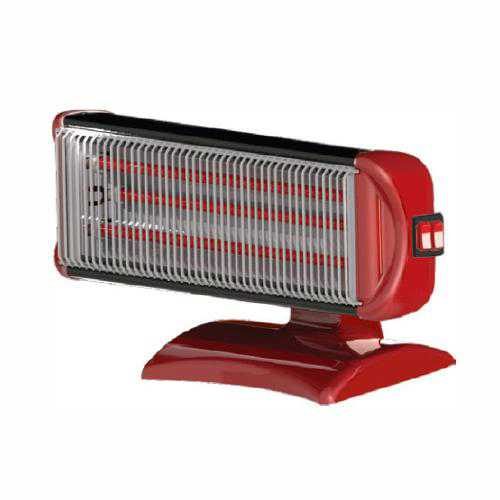

Convection electric heaters
These heaters have appeared a long time ago. They are a housing in which the heating element is located. The principle of operation is air convection. Warm air is lighter than cold air. A heating element or a nichrome spiral heats the air, and it rises up, the cold one goes down for further heating. These heaters are of the infrared type, only they do not have a screen that reflects infrared rays.
The heater located in the photo is commonly called the "Tram Stove". Most likely, the first heaters were intended for heating trams. A classic convection heater also burns dust, which has a detrimental effect on human health.
Convection heaters of a new design have recently entered the market.Instead of a heating element or nichrome thread, a micathermal heating element is installed in them. This made it possible to reduce the heating temperature of the case to 60 ° C, thereby eliminating the combustion of dust and air elements. In addition, the overall dimensions have decreased.
Slight heating of the element was achieved by increasing its area. The element size is slightly smaller than the body itself.
As a result, less heat is generated per unit area of the heating element. The temperature at any point is around 60 ° C. These heaters have manual temperature control, which allows you to maintain the same temperature in the room. The housing is protected against falling, the heater is protected from overheating.
Thanks to this, it can be left unattended for a long time. They are great for heating a child's room. The housing will not allow touching the heating element or toppling over. It is advisable to use this heater for long-term heating of the room.
Device selection criteria
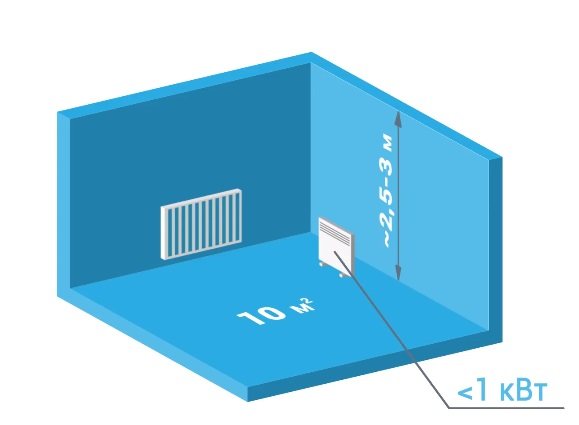

In order for the heating device to create the most comfortable temperature in the room, it is necessary to take into account several rules that will help not to make mistakes when choosing a model.
- Initially, you need to determine the maximum area of the room for which the device is purchased. Having already learned the area, the buyer will be able to understand how much power the equipment should have. There is a standard formula: there is 100 watts of power per square meter. If there are windows in the room, then another 200 W must be added to this value. Accordingly, if the room has an area of 10 square meters and one window, then it is necessary to purchase equipment with a power of 1200 watts. Do not forget that modern apartments still have heating equipment, which makes it possible to purchase equipment with less power.
- It is better to purchase devices that have several heating modes. This will surely save electricity. Also, a powerful heater that will work in one of the lower modes will last much longer.
- Dimensions. Each model differs in size, here it is necessary to determine the place for a particular room and select the type.
- Type of instalation. You can install the device on the floor, wall or ceiling.
- Control system. In budget versions, mechanical control is installed, in more expensive models - electronic. The former are more susceptible to wear and tear, the latter are more convenient and have more choice of modes.
- Maximum heating temperature. Here it is necessary to rely on the conditions in which the heater will be located. If there are small children in the apartment, you should not buy a heating device with a heating temperature above 60 degrees.
Oil-fired electric heaters
Oil heaters can also be attributed to electric heaters. They have a sealed housing filled with engine oil. It serves as a heat carrier from the element, which is heated to the surface of the heater. In appearance, such heaters resemble a battery.
These heaters began to be produced to improve operational safety. The oil acts as an intermediary and transfers heat from the element being heated to the body. Thanks to the oil, the body temperature is reduced to a safe level Such heaters should be used in a strictly upright position.
Operational safety
Like any device that uses electricity for operation, a halogen heater requires safety precautions during operation. Some of them have already been mentioned above, but it is better to bring them together under one heading in the form of a separate list of conditions that must be met:
- the housing of the halogen device must be grounded;
- the minimum distance from the device to the nearest object should be 1 m;
- it is forbidden to leave the device turned on overnight, cover the heater with anything or place objects on it for drying;

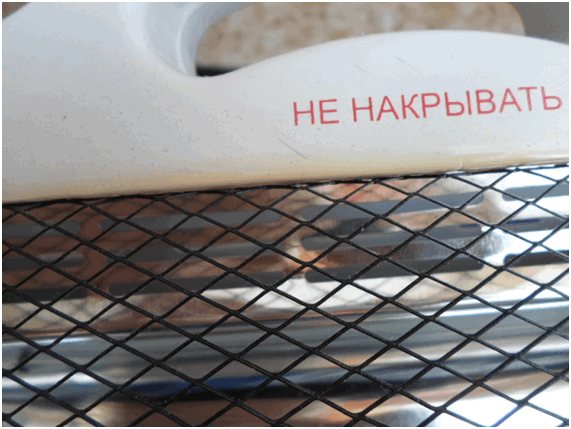
- avoid the simultaneous inclusion of several powerful halogen devices in order to avoid overloading the power supply;
- the concentrated directivity of the radiation of halogen lamps on a person from a short distance can lead to burns;
- when installing a wall-mounted halogen heater, the base must be insulated with a heat-resistant material;
- the radiation lamps must be kept clean, since the dust accumulated on them is dangerous for fire when the device is turned on;
- Operation of the halogen heater without a protective front mesh is prohibited.

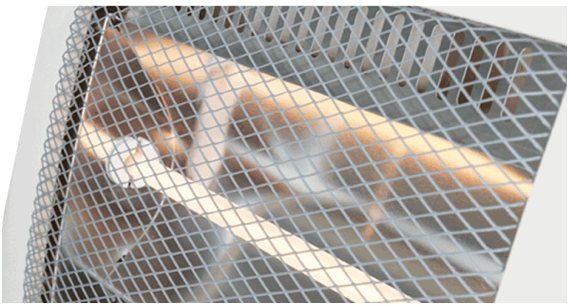
Fan heaters
The difference between fan heaters and convection heaters is that they have an electric motor with an impeller. The impeller blades blow on the heating element forcibly. Thus, removing heat from them and accelerating it around the room in the designated direction. Due to the intense airflow, the heating element does not overheat and the dust does not burn.
Thanks to the blowing, the small dimensions of the fan heaters have a power of about 3 kW. The air flow is directed in a certain direction, the room warms up quite quickly. A fan heater of this capacity allows heating about 30 m2. They are widely used in offices and shops.
Among the disadvantages can be noted the spread of dust and noise emitted during the operation of the electric motor. The dust is known to contain pollen, insect residues. Therefore, use in rooms where people prone to allergies are located is strictly prohibited.
Competent approach
Various devices of this group are presented in stores and on the market, differing in technical parameters, and in cost, and in appearance. Unfortunately, the popularity of technology explains the large number of counterfeits and low-quality products, the operation of which is not only ineffective, but also dangerous. As a result, during the purchase process, you must make sure that there are quality certificates and the authenticity of the product. It will not be superfluous to carry out a test run of the heater, heaters.
During operation, there should be no extraneous noise, crackling and smell. The housing parts and the cable should not heat up even when operating at maximum power, if heating occurs, it is likely that the problem concerns the electrical part, and this is fraught with a fire hazard.
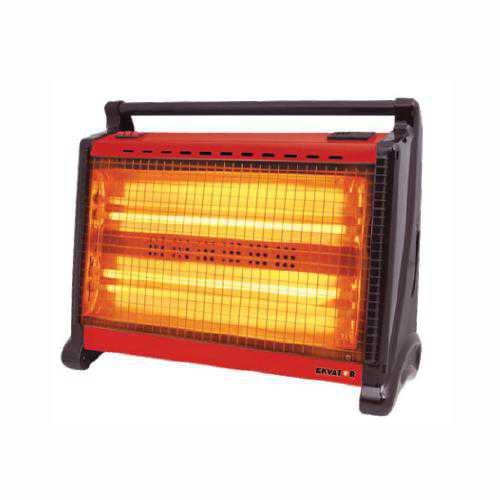

Electric storage heaters
Storage heaters were invented about 25 years ago. It was then that two types of payment rates appeared: night and day. Such heaters are widely used in Western Europe.
Their principle of operation is the same as for convection ones. They generate a lot of heat. This is due to the fact that the heating elements are lined with magnesite or ceramic bricks with a high heat capacity. Outside, they are wrapped in thermal insulation material, which helps to retain heat. Electricity is cheaper at night.
The heater is on at this time. It accumulates heat energy, then turns off. During the day, the air in the room passes through the heated stones with a fan, thereby creating heat. These heaters range from 3 kW to 9 kW. The heater operation modes are controlled by a microprocessor, which is pre-programmed. This allows you to maintain the set temperature in the room, while consuming a minimum amount of electrical energy during the day. This heating method is best suited for rooms that do not have central heating or stove heating.
Advantages and disadvantages of electric heaters
The considered heaters have both advantages and disadvantages.For your convenience, I have created a special table, which reflects all the information about the considered heaters. Now you can choose a heater for each room in your apartment or house.
| Table for choosing the type of electric heater | |||
| Heater type | Advantages | disadvantages | Application area |
| Convection classic | Low price | High fire hazard, when heating small rooms due to the combustion of dust, it negatively affects human health | In large or ventilated areas |
| Infrared | Low price, efficient use of electricity, since you can direct heat radiation in the right direction | High fire hazard, when heating small rooms due to the combustion of dust, it negatively affects human health | In large or ventilated areas |
| Oil | High operational safety, the ability to control the operating mode, round-the-clock operation, beautiful appearance | Large dimensions | Well suited for heating small spaces |
| Convection micathermic | Full operational safety, the ability to control the operating mode, round-the-clock operation, small dimensions and weight, beautiful appearance | Price | Well suited for heating small rooms, including children's rooms |
| Fan heater | High power, small dimensions | Acoustic noise, dust spread | If it is necessary to quickly warm up the air of a larger room, create an air curtain at the entrance to the room |
| Accumulative type | Full operational safety, the ability to control the operating mode, round-the-clock work | Dimensions and weight, price | Economically highly efficient for space heating at two tariff electricity costs |
Having looked at the table, you can understand that it is better to stop the choice on a convection micothermal and fan heaters.

